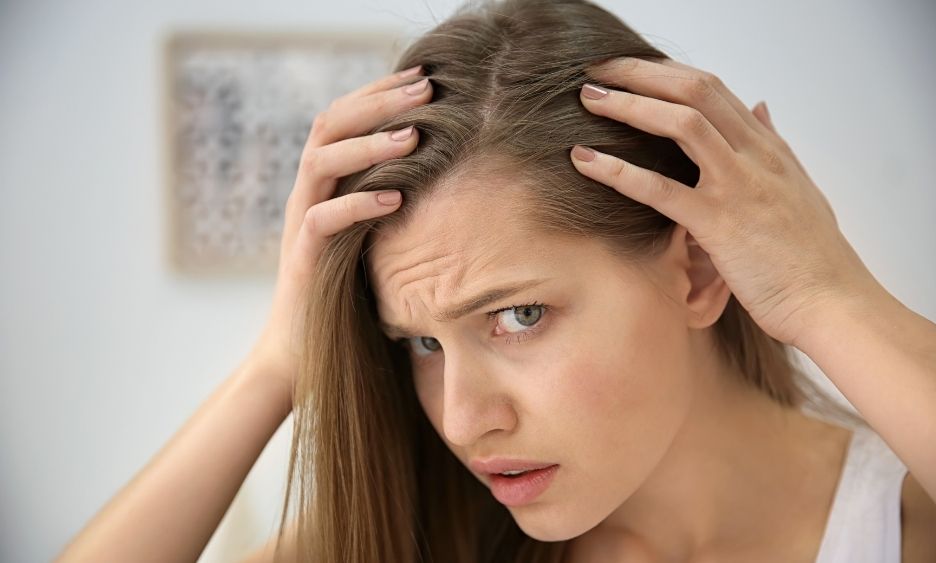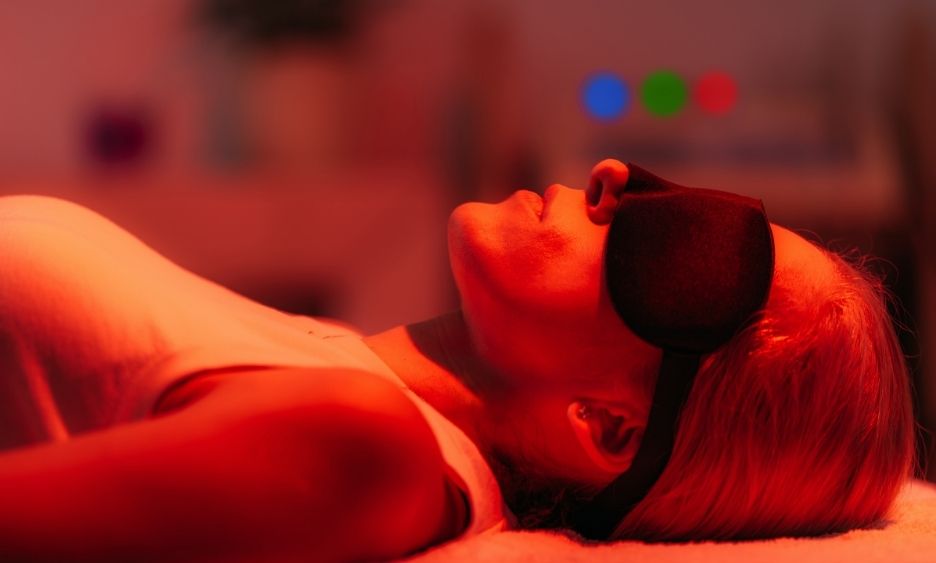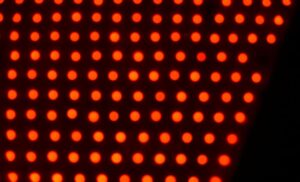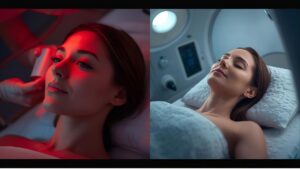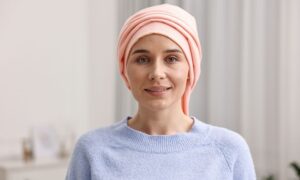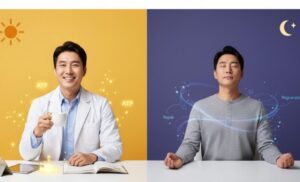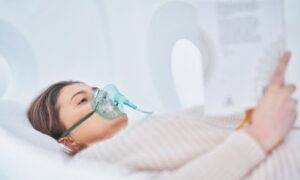Hair loss is a common concern affecting millions of people worldwide, with over 50% of men and 40% of women experiencing it by age 50. From thinning hair and receding hairlines to bald patches, hair loss can significantly affect self-esteem and confidence. Various factors contribute to hair loss, including genetics, hormonal changes, stress, poor nutrition, and underlying medical conditions like alopecia areata. Traditional solutions, such as minoxidil, finasteride, or hair transplants, are effective but often invasive or linked to side effects like scalp irritation. This has driven demand for safer, non-invasive alternatives like red light therapy for hair growth, a scientifically backed option that promotes natural hair regrowth without surgery or harsh chemicals.
Also known as hair growth light therapy, this treatment uses specific wavelengths of light to stimulate dormant hair follicles, improve blood flow to the scalp, and foster a healthier scalp environment. Thanks to its painless and non-invasive nature, red light therapy has become popular for both home and professional use with FDA-approved devices. The best red light therapy for hair growth depends on proper wavelength, session frequency, and consistency. This guide explores how it works, optimal usage, benefits, and answers common questions about using red light therapy to stimulate hair follicles.
What Is Red Light Therapy for Hair Growth?
Understanding the Science of RLT
Red light therapy (RLT), also called low-level light therapy or photobiomodulation therapy, is a form of treatment where specific light-emitting diodes (LEDs) stimulate cellular activity. For hair restoration, RLT delivers visible red light (630–670 nm) or near infrared light (810–850 nm) to the scalp, penetrating 2–5 mm to reach hair follicle mitochondria. This red light therapy increases ATP (adenosine triphosphate) production, enhancing cell proliferation, promoting cellular repair, reducing oxidative stress, and encouraging dormant follicles to re-enter the growth phase.
How RLT Stimulates Hair Follicles
Hair follicles rely on proper blood flow and nutrient delivery to remain active. Red light therapy helps by:
- Improving Blood Circulation: Ensures hair follicles receive essential oxygen and nutrients through increased blood vessel activity.
- Reducing Inflammation: Helps calm tissue inflammation often linked to thinning hair, androgenetic alopecia, and female pattern hair loss.
- Activating Dormant Hair Follicles: Red light devices stimulate inactive follicles to produce new hair in thinning areas, promoting hair regrowth.
How to Use Red Light Therapy for Hair Growth
Proper application of red light therapy is essential to maximize its benefits for hair growth. Following a consistent and careful routine ensures your hair follicles receive the stimulation they need to enter the growth phase and improve overall scalp health.
1. Choose a Reliable Device
Red Light therapy devices come in various forms. When selecting a device, consider:
- Wavelength output (must be within 630–850 nm range)
- Power density (measured in mW/cm²)
- Coverage area (full scalp vs. targeted areas)
- FDA clearance or clinical validation
A high-quality red light device ensures your hair follicles receive sufficient light energy to trigger hair regrowth.
2. Prepare Your Scalp
Before each session, wash and dry your scalp thoroughly. Removing oils, dirt, and hair products allows the light therapy to penetrate effectively, ensuring maximum stimulation of the hair follicles. Clean scalp surfaces help reduce interference and enhance the overall effectiveness of the treatment.
3. Position the Device Correctly
For optimal results, position yourself so that the light is evenly distributed across the scalp. Make sure all areas affected by thinning hair receive adequate exposure. The device should be placed at the recommended distance from the scalp as indicated in the instructions, usually close enough to allow penetration but far enough to remain safe and comfortable.
4. Session Duration
Clinical research suggests sessions of 10–20 minutes are sufficient to stimulate hair follicles. Longer sessions do not necessarily speed up hair growth. Consistency is more important than extended exposure, as repeated stimulation over time encourages dormant follicles to re-enter the growth phase.
5. Safety Tips
- Avoid direct exposure to the eyes. Most devices include built-in safety measures or goggles.
- Do not exceed recommended session lengths to prevent scalp irritation.
- If you experience discomfort or redness, pause the treatment and consult a healthcare professional.
How Often Should You Use Red Light Therapy for Hair Growth?
Recommended Frequency
For the best results, red light therapy should generally be applied 3–5 times per week during the initial treatment phase. Daily sessions are not required, as overuse does not necessarily accelerate hair growth. Consistency over time is far more important than session frequency.
Maintenance Phase
After visible improvements in hair density and thickness are typically observed after 3–6 months, the frequency can be reduced to 2–3 sessions per week to maintain results. Skipping sessions may slow progress, while excessive use is unnecessary and offers no added benefit.
Timeline for Noticeable Improvement
- Short-term (1–2 months): Increased scalp stimulation may improve scalp health and reduce minor hair shedding.
- Medium-term (3–4 months): New hair growth may begin to appear in thinning areas, and hair may feel fuller and thicker.
- Long-term (6–12 months): Significant improvements in hair density, thickness, and overall scalp coverage are often observed, especially in individuals with androgenetic alopecia.
Benefits of Red Light Therapy for Hair Growth
1. Stimulates Hair Follicles and Promotes Thickness
Red light therapy works by activating dormant hair follicles, encouraging them to re-enter the anagen, or growth, phase. This stimulation increases the number of active follicles on the scalp, resulting in denser, fuller hair. Over time, individuals may notice a reduction in visible scalp areas and an overall improvement in hair volume and texture.
2. Reduces Inflammation and Improves Scalp Health
Inflammation of the scalp can contribute to hair thinning and follicle damage. RLT helps modulate this inflammation, creating a healthier environment for hair growth. Additionally, improved blood circulation from the therapy ensures that essential nutrients and oxygen are efficiently delivered to the hair roots, supporting stronger, healthier follicles and promoting overall scalp wellness.
3. Non-Invasive and Safe
Unlike surgical procedures or chemical treatments, red light therapy is entirely non-invasive. Sessions are painless and require no recovery time, making it convenient for regular use. Most users report only a mild warming sensation on the scalp, and serious side effects are rare. Its safe profile makes RLT suitable for long-term hair restoration efforts.
4. Can Complement Other Treatments
Red light therapy can be effectively combined with other hair loss interventions, such as topical treatments like minoxidil or oral medications like finasteride. Using RLT alongside these therapies can produce synergistic effects, enhancing overall hair density and thickness without interfering with existing treatments. Many clinicians recommend integrating RLT into a broader hair care regimen to achieve the best results.
Does Red Light Therapy Actually Work for Hair Growth?
Yes, clinical studies support the effectiveness of red light therapy (RLT) for hair growth, particularly in individuals with androgenetic alopecia, also known as pattern hair loss. A 2014 study published in Lasers in Surgery and Medicine demonstrated that low-level laser therapy (LLLT) using a 655 nm wavelength significantly improved hair counts in both men and women with androgenetic alopecia. The therapy stimulated hair follicles, resulting in increased hair density and thickness.
Individuals with early-stage hair thinning tend to respond best, as RLT can reactivate dormant or miniaturized follicles. While results vary depending on the extent of hair loss, device parameters, and treatment consistency, most users notice gradual improvements in hair growth over several months.
Red light therapy is a supportive, non-invasive approach. It is not a miracle cure, but it safely enhances follicle health and promotes gradual, natural hair regrowth when used consistently. Many people also ask, “Is red light therapy good for hair growth?” Clinical studies, such as the 2014 trial showing a 39% increase in hair density after 16 weeks of LLLT at 655 nm, confirm that consistent use improves hair thickness, hair count, and overall scalp health.
Tips to Maximize Hair Growth Results
1. Combine With a Proper Hair Care Routine
For optimal results, red light therapy should be complemented with a healthy hair care routine. Use gentle, sulfate-free shampoos, nutrient-rich oils, and conditioners that nourish the scalp. A balanced diet rich in vitamins and minerals such as biotin, zinc, iron, and vitamin D supports follicle health and enhances the effects of therapy.
2. Avoid Harsh Chemicals and Heat Styling
After each session, avoid chemical treatments, hair dyes, or excessive heat styling as hair follicles are in a stimulated growth phase and may be more sensitive. Minimizing these stressors helps maintain follicle integrity and prevents breakage or damage.
3. Track Your Progress
Consistently monitor your hair growth by taking photos every 4 to 6 weeks. Tracking changes over time allows you to see subtle improvements, stay motivated, and ensure adherence to your red light therapy routine.
Conclusion
Red light therapy is a safe, non-invasive, and scientifically supported solution for individuals experiencing hair thinning or hair loss. By stimulating dormant hair follicles, improving scalp blood flow, and reducing tissue inflammation, it promotes a healthier environment for hair regrowth. Consistent use and proper red light therapy device settings are essential to maximize the benefits of this therapy.
In addition to RLT, maintaining a comprehensive hair care routine, including gentle cleansing, nutrient-rich products, and a balanced diet, can further enhance results. While it is not a miracle cure, red light therapy serves as an effective standalone treatment or a complementary option alongside traditional hair loss treatments like minoxidil, finasteride, or hair transplantation, offering a practical and low-risk way to support natural hair growth, improve hair thickness, and maintain overall scalp health.
Ready to start your hair restoration journey? Explore Hue Light’s range of red light therapy devices and find the one that best suits your needs for safe and effective hair growth.
